by Hannes Vereecke and Sebastian Krause
This article was originally published in the Historical Brass Society Journal.
German repertoire of the interwar period constitutes a significant portion of the music performed by today’s distinguished orchestras. One of the compositions that stands out in this context is Alban Berg’s opera Wozzeck, which was premiered by the Staatskapelle Berlin on 14 December 1925.1 Trombones figure prominently in the orchestration of this work, for they regularly accompany the main character, Wozzeck.
From the trombonist’s point of view, this opera represents a considerable challenge, both technically and musically.2 Although Berg’s autograph score specifies alto trombone for the first trombone part, most performers today believe that a tenor instrument is more appropriate, based on the part’s tonal compass.3 A characteristic example is given in Figure 1, an excerpt from Act III. Here Berg writes a low G, although the lowest note on alto trombone in Ef alto is A.4

Figure 1: Alban Berg, Wozzeck, Act III.
The question remains: What specific instrument should the first trombonist use? A suitable instrument for this purpose must support the player in the extreme registers and also permit a broad range of expression. The small-bore instruments that were typically used in French, English, and American orchestras in the interwar period are quite responsive, yet the size of their bore limits their expressive capabilities to some extent. On the other hand, typical large-bore German trombones of the period have strong expressive capabilities but are relatively weak in tonal stability and responsiveness.
The principal trombonist with the Staatskapelle Berlin for the premiere of Wozzeck was Paul Weschke (31 December 1867–19 March 1940),5 who held this position from 1895 to 1929.6 His name is often included among the great German trombone virtuosos, such as Friedrich August Belcke (1795–1874), Carl Traugott Queisser (1800–1846), and Josef Franz Serafin Alschausky (1879–1948). In addition to Weschke’s distinguished career as a professional trombonist, he was highly regarded as a teacher. One of his greatest achievements is the design, in cooperation with the firm of Kruspe in Erfurt, of the trombone that is the subject of this article (see Figure 2).
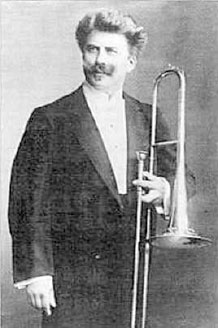
Figure 2: Paul Weschke holding his Kruspe trombone. Reproduced by the kind permission of Jay Friedman.
In the opinion of many performers, the Weschke model Kruspe trombone is characterized by: (1) a broad dynamic and tonal flexibility, (2) a warm sound, and (3) a comfortable response, especially in the high register. The continued popularity of this type of instrument among orchestral trombonists has generated interdisciplinary scholarly interest in Kruspe trombones in the past.7 Our essay aims at a technical analysis of this instrument.
The provenance of the specific instrument used for our research can be traced back to its acquisition directly from the Kruspe workshop in Erfurt in 1952 by Karl Semsch,8 who served as second trombonist with the Gewandhaus Orchestra in Leipzig from 1956 to 1992.
After his retirement, the trombone came into the possession of one of the authors, Sebastian Krause. Although this instrument was made some twenty-seven years after the premiere of Berg’s Wozzeck, it can be assumed that it is essentially identical in its specifications to the trombone Weschke played in 1925. This supposition has been confirmed by the study of seven other Weschke-model trombones. Kruspe’s successor, Peter Heldmann, maintains that the tools and mandrels used even in the late twentieth century were the same as those employed in the Kruspe workshop in the 1920s.
The technical analysis of this instrument has been guided by the following research questions:
- What are the specific acoustical characteristics of this instrument?
- Which mouthpiece was typically associated with this type of instrument?
- How does this instrument differ from orchestral trombones in common use today?
The Appendix to this article shows the various parts of the instrument for the purpose of illustrating the instrument’s geometrical design.
From “Tuba mirum†to Wozzeck
The acoustical properties of brasswind instruments are defined largely by the acoustically effective bore profile; changes in musical taste and perception therefore often bring about changes in bore profiles.9 The trombone flourished in Western art music during the sixteenth century, endured a precipitous decline during the baroque period, but experienced a revival in popularity in the late eighteenth and early nineteenth centuries. By the middle of the eighteenth century the trombone’s principal use was in church music in Austria and Germany, but toward the end of that century it entered the Classical orchestra. Mozart’s Requiem (1791), particularly the solo for second trombone in the “Tuba mirum,†stands out as a prominent example of trombone repertoire from this period. Figure 3 shows a characteristic example of a Viennese classical trombone.

Figure 3: Tenor trombone in B-flat by Joseph Huschauer (Vienna, 1794). Reproduced by the kind permission of the Edinburgh University Collection of Historic Musical Instruments. Photo by Antonia Reeve.
By the end of the eighteenth century the trombone was widely used in orchestral and band music. The transition from the Classical to the Romantic era was accompanied by significant changes in sound ideal. The Romantic trombone now needed to be able to express a wide spectrum of emotions and sound colors, and be loud enough to assert itself in the expanding orchestra.10 These new requirements directly affected trombone engineering: one can observe a transition in scaling from the typical small-bore Classical instrument to the wider-bore German trombone. A substantial contribution here was provided by the Leipzig maker Christian Friedrich Sattler (1778–1842).11 The large scaling results in a “woolly†sound and greater tonal flexibility, while the large bell results in a greater volume of sound.
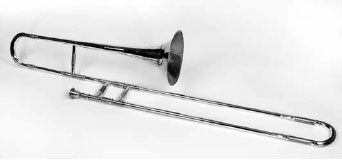
Figure 4: Tenor trombone by Christian Friedrich Sattler (Leipzig, 1841). Reproduced by the kind permission of the Museum fur Musikinstrumenten der Universität Leipzig, Photo by Marion Wenzel.
A review in the Allgemeine Musikalische Zeitung for 27 July 1846 of a performance by the renowned trombone virtuoso Carl Traugott Queisser encapsulates the sound ideal of the German Romantic trombone:
His forte is the most beautiful sound of a deep “Posaune” stop on the pedals of an organ; his piano cantabile playing makes one think one is listening to a master French-horn player.12
The increasing technical requirements associated with the orchestral works of the early twentieth century underscored the need for an instrument with improved resonance behavior and better response, especially in the extreme registers, though an instrument capable of a wide range of expression was also needed. The trombone parts in Hans Pfitzner’s opera Palestrina (premiered 1917) as well as Richard Strauss’s Die Frau ohne Schatten (premiered 1919) offer noteworthy examples of these new trends.13 It was in the context of these musical requirements that the Weschke model emerged from the firm of Eduard Kruspe in Erfurt. Following World War II these instruments were replaced in German orchestras by American-made instruments that featured enhanced intonation and increased playing comfort due to optimized response.14
The Kruspe model “Prof. Weschke”

Figure 5: Solo tenor trombone, model “Prof. Weschke,†from a catalogue of the firm of Eduard Kruspe, possibly ca. 1934.
The Kruspe firm regularly produced fine illustrated catalogues in which their instruments were artfully displayed. Figure 5 shows the Kruspe model “Prof. Weschke†trombone from a catalogue presumably produced by Eduard Kruspe’s son-in-law, Georg Wendler, who joined the management of the company on the occasion of the celebration of its 100th anniversary in 1934.15 Wendler describes the musical properties of the Weschke trombone as follows:
As a specialty for principal and solo trombone, we produce a small-bore tenor trombone, according to the specifications of Prof. Paul Weschke that, owing to its astonishing tonal compass and incredibly light response, found great acceptance among artists within a short time.16
Mouthpiece
The mouthpiece is considered by brasswind players to be one of the most important parts of their instrument, for it exerts considerable influence on tone, range, and intonation.17 Since each player has a unique set of lips, teeth, and mouth cavity, very little can be stated categorically concerning the proper shape and dimensions for mouthpieces. From an acoustical standpoint, the mouthpiece has two main functions: it boosts the instrument’s resonances in the area of the mouthpiece’s own resonance, and in cooperation with the bell it corrects the inharmonicity of the acoustical spectrum by lowering the higher resonances.
The question remains: Which type of mouthpiece is most appropriate for the Weschke instrument? Crucial evidence in this regard is provided by a mouthpiece engraved “Prof. Weschke†(see Figure 6), preserved in connection with the instrument described below.

Figure 6: Mouthpiece engraved “Prof. Weschke,†associated with a Kruspe Weschke-model trombone.
The mouthpiece shown in Figure 6 features a small bore, thin-walled shaft, and quasi- funnel-shaped cup. Its dimensions (in millimeters) are as follows:
total length – 85.9
diameter of cup – 24.8
depth of cup – 24.5
minimum diameter – 6
internal diameter at large end of backbore – 9.9
throat – 10
A small step can be observed between the end of the throat and the beginning of the straight conical backbore. The mouthpiece intrudes approximately 31.4 mm into the instrument.
BellFigure 7: Bell section of the “Prof. Weschke†trombone.
The scaling of the bell of a brass instrument affects responsiveness, sound intensity, sound color, and overall intonation. From an acoustical standpoint, the primary function of the bell consists in providing an effective radiation of the supplied energy. The bell acts as a high-pass filter, supporting the radiation of higher-frequency components. Since the low- pitched resonances are effectively reflected earlier than the shorter waves, the latter will be more efficiently radiated. The improved radiation of the higher frequencies and their low incidence of reflection weaken the standing wave and the resonances. Designing a bell profile therefore in essence consists in the establishment of a balance between energy radiation and energy reflection; responsiveness is thereby influenced since this parameter is partially defined by the balance between the two. A wider bell will create a darker sound since the lower frequencies are more easily radiated than with smaller bells. Furthermore, a larger bell will provide a higher sound-pressure level. Both of these aspects are in accordance with the requirements of the orchestral-trombone sound idiom of the 1920s. Finally, the bell contributes to the harmonic alignment of the resonances by raising the low-pitched resonances; its scaling will thus have a direct impact on intonation. The bore profile of the bell of the Weschke model trombone, with its rapid flare, is significantly different from that of other German trombones.
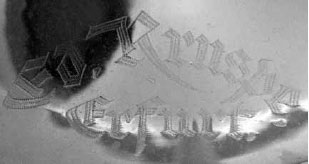
Figure 8: Engraving at the garland of the Weschke-model trombone.
Christian Friedrich Sattler was of the opinion that tuning slides negatively affect an instrument’s playing properties. In this context it is significant that the Weschke instrument under consideration does not have a tuning slide. A significant characteristic of its design is its continuously conical scaling. One consequence of a tuning slide is that at the point of its connection with other parts of the instrument, the tubing must be cylindrical in order to permit it to be moved.
Weschke-model instruments also feature a distinctive flat bow shape. The snake-shaped decoration on the bell-bow is made of German-silver wire. Detailed instructions on how to manufacture this snake ornament is provided in Karl Nadl’s Metallblasinstrumentenbau.18 In addition to the typical engraving displayed in Figure 7, an oak-leaf pattern is present.
A noteworthy aspect of the bell of this instrument is the extremely thin gauge of the metal. Wall thickness, with its resulting vibrational behavior, is an integral aspect of the acoustical design of brasswind instruments.19 In an article in the 1978 International Trumpet Guild Journal, Richard Smith stated that vibration amplitude is inversely proportional to the fourth power of wall thickness.20 A consequence of thin walls and the absence of a tuning slide is light weight, which Kruspe considered an important feature of a high-quality instrument. The entire bell section of the trombone depicted in Figure 5, weighs only 480g.
Throughout the nineteenth century, specialized brasswind bell makers established workshops in Vogtland. From the handwritten company records of Eduard Kruspe and his successors, we know that Kruspe eventually outsourced the manufacture of his renowned thin bells from around 1910 on.21 Even today Bernd Sandner, located in Erlbach—in Vogtland, less than four kilometers from Markneukirchen—produces bells after the specific Kruspe profiles.22 For this purpose he uses gold brass sheet 0.35–0.4 mm thick. During the production process the wall thickness in the bell decreases toward the bell end by approximately 0.15 mm, resulting in an extremely thin wall of about 0.2 mm.
Slide

Figure 9: Slide section of the Weschke-model trombone.
The relatively long slide is made of seamless gold brass tubing, 13.5 mm in external diameter. The water key, which is located at the middle of the slide bow, functions as a siphon, as on French trombones. Due to the additional weight of the garland and the long slide, the instrument tends to be front-heavy, which is why players accustomed to modern trombones experience difficulties in adapting to such an instrument. The distinctive hand-rest, shown in Figure 9, improves the handling of the instrument. The inner slide has an internal diameter of 11.2 mm with slide stockings 118 mm in length and 12.8 mm in external diameter. The narrow-dimensioned slide results acoustically in a clear separation of the resonances, making it easier for the player to lock into the correct tone. Narrow dimensions affect playing behavior positively in the high register but instruments with wider dimensions have a greater lipping range.
The slide section is joined to the bell section by a friction joint, which can cause problems when a mute has to be inserted quickly. Today many makers of German trombones use a screw thread between slide and bell sections. While this is a very practical solution, some musicians are skeptical of its acoustical effect.
Musical properties of the Weschke trombone
The acoustical evaluation of brasswind instruments includes the assessment of various parameters, such as intonation, responsiveness, tone quality, and playing comfort. From a scientific point of view the evaluation of these properties is somewhat ambiguous, since the interaction between player and instrument has a significant impact on them; each player has his/her own specific timbre. Much research has been conducted using statistical analysis of player assessments, for the specific purposes of acoustical optimization of brasswind designs.23 Input impedance, the ratio between pressure and flow of air at the mouthpiece, is a parameter established in brasswind acoustics to objectify such analysis.24 Although such measurements do not characterize acoustically relevant aspects such as non-linear propagation, they do provide basic insight into such playing properties as intonation and response.
An input-impedance curve in its essence represents the reaction of the instrument–its resonances–to the energy impulses produced by the player. Such a measurement provides a reliable view of the shape and frequency position of the resonances in the instrument. A peak in the impedance curve means that a maximum of energy is retained within the instrument, a pre-condition for the creation of standing waves and a steady tone.
Input-impedance measurement, however, does not provide any information on the interplay between musician and instrument. The musical interpretation of input-impedance curves remains a persistent question in the field of brasswind acoustics. This means that in spite of the accuracy and objectivity of this method, players’ assessments are still indispensable for the musical instrument maker. Nevertheless, the strength of this method is surely the fact that it can be used in comparisons. In other words, knowing the acoustical playing properties of other instruments, a comparison of input impedances at least provides a relative assessment.
The acoustical properties of the Weschke trombone were compared with the input impedance of a period trombone with a somewhat wider bore, made by Friedrich Alwin Heckel (Dresden, ca. 1935), and a modern professional-model trombone made by Haagston (Mank, 2007). The input impedances measured in closed position are presented in Figure 10.
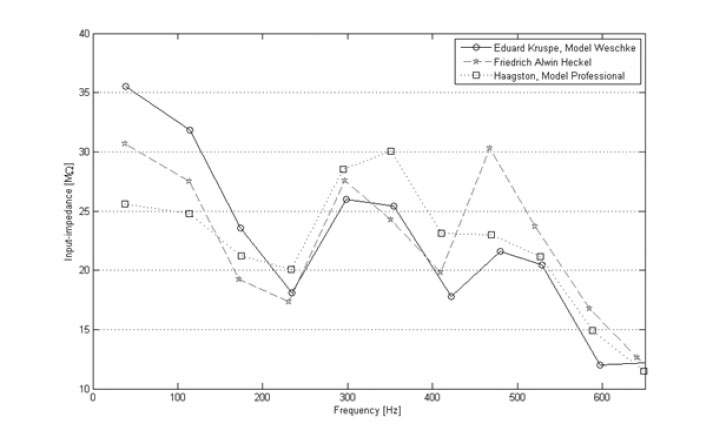
Figure 10: Comparison of input impedances of three trombones.
It is generally assumed that a higher resonance peak indicates a better response, since more energy is retained in the instrument. As can be seen in Figure 10, the Weschke instrument features a strong first resonance, but the fifth and higher resonances are weaker. A pronounced peak exhibits a steep curve, which results in a decrease in flexibility, since it will affect the lipping range negatively. The position of the input-impedance peaks on the frequency axis in relation to the harmonic series, as well as the amplitude, the scope, and the envelope are thus acoustically relevant aspects of resonance curves. The narrower bore profile of the Weschke instrument also provides a considerable amount of energy in the first few resonances.
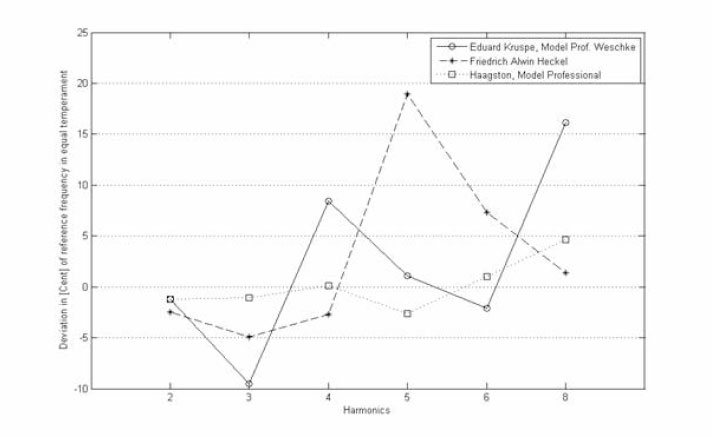
Figure 11: Deviation from equal temperament in cents for harmonics 2 through 8 of a harmonic series on B-flat.
Since the resonances of straight tubes do not correspond to a harmonic series, interaction among bell, mouthpiece, and body design is required in order to bring these resonances in line. The inherent tuning of a brasswind instrument can thus be ascertained by the locations of these peaks, also called resonances. To a certain extent, the amplitude and alignment of the peaks indicate the quality of response of the instrument.25 Having all fundamental frequencies of playable notes lie close to members of one harmonic series is a fundamental benchmark of a good design.26 As a rule of thumb, an instrument is considered to have good intonation if its harmonics vary no more than 15 cents from equal-tempered tuning. The Weschke instrument fulfills this requirement for all tones, except for B-flat1. The results presented in Figure 11 indicate that the inherent tuning of the Weschke instrument is less balanced than the modern Haagston trombone, though in the high register, where the instrument is most often played, the intonation is better than that of the Heckel instrument.
These findings now raise the question: Why then should a player use a Weschke trombone? Nikolaus Harnoncourt motivates his preference for German-style instruments for early twentieth-century orchestral repertoire as follows:
In everything, from a certain point [in musical instrument design] when the maximum is reached, no further improvement is possible. Then there can only be changes, [and] every improvement must be paid for with a [concomitant] deterioration. Security versus beauty: that is always the trade-off.27
From a musician’s point of view, the essence of a German-style trombone is that it permits loud playing without producing an unpleasant, overpowering “brassy†sound. Consequently one can say that the decision to use such a German-style trombone, with its less comfortable playing characteristics in comparison to more modern trombones, is often founded on the search for an instrument with the potential for enhanced expressiveness at high as well as low dynamic levels.
The authors wish to thank Peter Heldmann, successor to the Kruspe firm, who contributed subs- tantially to the research presented in this essay by providing precise information on constructional and acoustically relevant matters of the Kruspe “Prof. Weschke†trombone.
Hannes Vereecke is a Lecturer at the Vocational College of Musical Instrument Making in Ludwigsburg, Germany. Since receiving his master’s degree in musical instrument making from the Royal Conservatory in Ghent, Belgium, he has specialized in the technical study of brasswind instruments. He received the Ph.D. degree in Musical Acoustics from the University for Music and Performing Arts, Vienna, in 2014 with a dissertation on the construction of sixteenth-century trombones.
Sebastian Krause serves as solo trombonist with the MDR Leipzig Radio Symphony Orchestra and lectures at the University of Music and Theater “Felix Mendelssohn Bartholdy†in Leipzig. He regularly gives concerts and master classes throughout Europe and has participated in the production of more than 100 CDs, in addition to those produced by his orchestra. In 2008 he became a founding member of the Verein für Mitteldeutsche Posaunengeschichte e.V.; he has served as this society’s chairman since 2013.
APPENDIX

Figure 12: Input-impedance of the Weschke trombone in closed position.
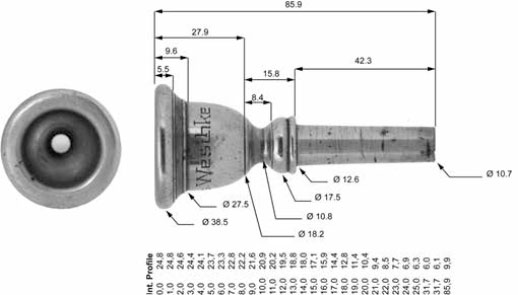
Figure 13: “Weschke” mouthpiece.
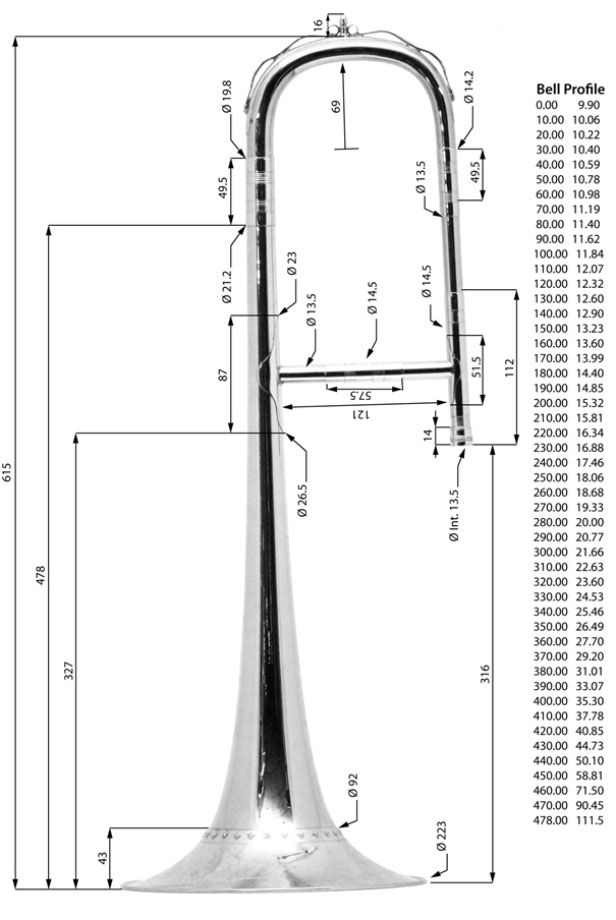
Figure 14. Bell section of the Weschke trombone.
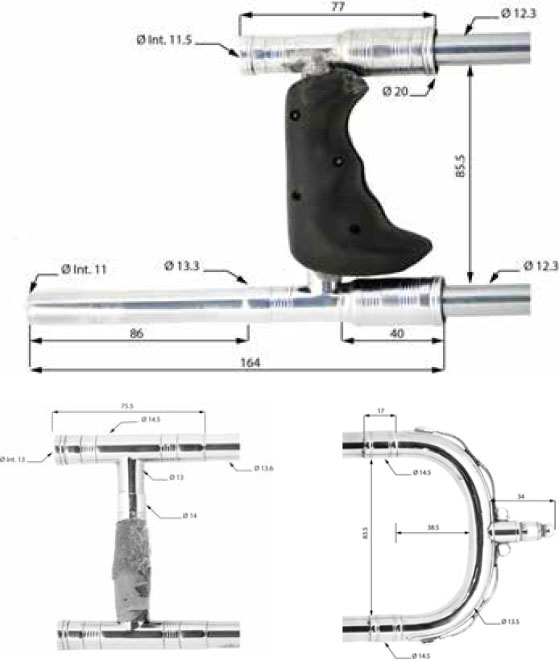
Figure 15: Parts for the slide section of the Weschke trombone.Notes
1The New Grove Dictionary of Opera, s.v. “Wozzeck” (by Andrew Clements), http://www.oxfordmu- siconline.com/subscriber/article/grove/music/O005360 (accessed 13 June 2014).
2 Ernst Hilmar, Wozzeck von Alban Berg: Entstehung-Erfolg-Repression (1914–1935) (Vienna: Universal Edition, 1975), 50.
3 Robin Gregory, The Trombone: The Instrument and its Music (London: Faber and Faber, 1973), 111.
4 Ibid.
5 Registers of births, Schloßkirche St. Aegidien, Bernburg, accessed 31 March 2014.
6 Carl Lenthe, “100 years of Trombone History—From Paul Weschke to Horst Raasch,†ITA Journal 25, no. 3 (1997): 39.
7 Michael Karußeit, “Posaunen für Tannhäuser: ein Portrait der Firma Ed. Kruspe, Wutha Farnroda,†Das Schallstük 26, no. 2 (1998): 4-8.
8 Karl Semsch, personal communication, November 2014.
9 Arnold Myers, “Characterization and Taxonomy of Historic Brass Musical Instruments from an Acoustical Standpoint†(Ph.D. diss., University of Edinburgh, 1998).
10 Herbert Heyde, Das Ventilblasinstrument (Leipzig: VEB Deutscher Verlag für Musik, 1987), 83–84.
11 William Waterhouse, The New Langwill Index (London: Tony Bingham, 1993), 345.
12 “Sein Forte ist der schönste Orgelton eines wohlmensurirten Posaunenpedals; bey seinem piano cantabile glaubt man einen Meister auf dem Waldhorne zu hören.†“Nekrolog Carl Traugott Queisser,†Allgemeine Musikalische Zeitung 27 (2011): 459.
13 Hans Kunitz, Die Instrumentation 8: Posaune (Leipzig: Breitkopf & Härtel, 1959), 618–19.”
14 Reinke Eisenberg und Karlheinz Weber, “40 Jahre in Bayreuth, Paul Schreckenberger feiert Jubiläum,†Das Schallstück 27, no. 3 (1998): 7.”
15 Although the catalogue is undated, it is presumed to have been made for the 100th anniversary of the company. The original lithographic printing plates, which were wrapped in a local newspaper dated 12 June 1937, survive.”
16 “Als besondere Spezialität für erste und Soloposaune fertigen wir eine enge Tenorposaune nach Angaben des Herrn Prof. Paul Weschke, Berlin, welche infolge ihres verblüffenden Tonumfanges und fabelhaft leichter Ansprache in kurzer Zeit größte Anerkennung in Künstlerkreisen gefunden hat.†Quoted in Thomas Remmert, “Die Firma Kruspe in Erfurt,†in Die Deutsche Posaune: ein Leipziger Welterfolg; Katalog zur Sonderausstellung im Grassi Museum für Musikinstrumente der Universität Leipzig (Leipzig: Verlag des Museums für Musikinstrumente der Universität Leipzig, 2010), 66.”
17 Vincent Bach, Vincent Bach Mouthpiece Manual (Elkhart: Conn-Selmer, 2012).”
18 Karl Nadl, Metallblasinstrumentenbau (Frankfurt am Main: Verlag Das Musikinstrument, 1970), Tafel 32.”
19 Wilfried Kausel, Daniel Zietlow, and Thomas Moore, “Influence of Wall Vibrations on the Sound of Brass Wind Instruments,†The Journal of the Acoustical Society of America 128 (2010): 3161–74.
20 Richard Smith, “Recent Developments in Trumpet Design,†International Trumpet Guild Journal (October 1978): 27–29.”
21 Michael Karuaeit, “Feine Schmieden im Lande IV,” Das Schallstück 26, no. 2 (1998): 8.
22 Bernd Sandner, personal communication, June 2014.
23 Gunter Ziegenhals, Subjektive und objektive Beurteilung von Musikinstrumenten: Eine Untersuchung anhand von Fallstudien (Dresden: TUD Press, 2010).”
24 R.L. Pratt and J.M. Bowsher, “The Objective Assessment of Trombone Quality,†Journal of Sound and Vibration 65, no. 4 (1979) 521–47.
25 Klaus Wogram, Die Bedeutung nichtstationärer Schwingungsvorgänge für die Bewertung von Musikins- trumenten: Qualitätsaspekte bei Musikinstrumenten; Beiträge zu einem Kolloquium (Celle: Moeck, 1988).
26 Arthur Benade, Fundamentals of Musical Acoustics, 2nd edn., revised (New York: Dover Publications, 1990).
27 “Da bei allem ab einem gewissen Moment, wenn das Maximum erreicht, ist keine Verbesserung mehr maglich ist. Da gibt es nur noch Veränderungen, da mua jede Verbesserung mit einer Ver- schlechterung bezahlt werden…. Sicherheit gegen Schanheit, das ist immer auf der Waagschale.” Nikolaus Harnoncourt, Mozart-Dialoge, ed. Johanna Fürstauer (Salzburg: Residenz Verlag, 2005), 191.